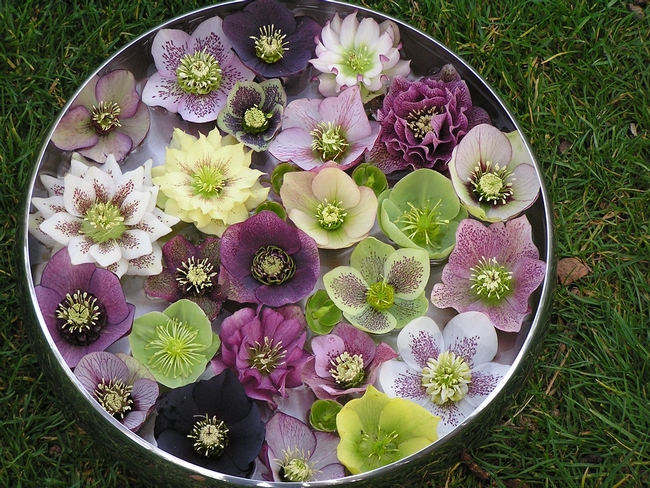By David Walther, Butte County Master Gardener, December 27, 2013

Hellebores like high shade and thrive under deciduous trees in well-drained fertile soil. Good locations include the north or east sides of walls, and underneath high-branching trees. Like many flowering plants that do well in shady conditions, hellebores do need light in order to bloom profusely, so the more sun you can provide them in a shady location, the more flowers you will have. While a daily blast of afternoon sun in late summer and fall may scorch their leaves, they will still bloom beautifully in the spring.
An added bonus is that hellebores are deer-resistant and do not freeze in cold winters.
Happy hellebores will self-sow if their flowers (which are actually sepals, rather than petals) are not cut off after the blooms have faded; seed pods will form, eventually (usually in July) dropping their seeds close by the mother plant, where new baby plants will develop. Because the new plants develop so close to the original plant, it is a good idea to thin the babies out or transplant them.
Fertilize in September, when they are forming the buds for their winter & spring flowers.
Right now, when you are raking up leaves and cleaning up your garden, is a good time to cut off last year’s hellebore leaves (most hybrid hellebores are stemless). If there are no buds showing yet, you can simply grab the leaves by the handful and cut them off. If the plant has started to bud, just cut off last year’s leaves. It is not absolutely necessary to do this, as new leaves will cover the old ones, and the old leaves will eventually turn brown and can be swept away by hand. If you are in doubt, it is safe to cut anything (stems or leaves) that has turned brown. Cutting them off does make yard raking easier, as once the leaves are gone you can rake right over the plant. This gives the garden a cleaner look now and also later, when the new leaves and buds appear and the plant blooms.
If you want a hellebore that blooms a particular color, it is best to buy the plant while it is in flower, so you know you are getting exactly what you want. That plant will always bloom that particular color, but there is no guarantee that its seedlings will follow suit.
While some early-blooming hellebores are already in flower, most will bloom between late January and early April. Look for them at your favorite nursery.